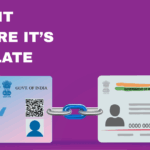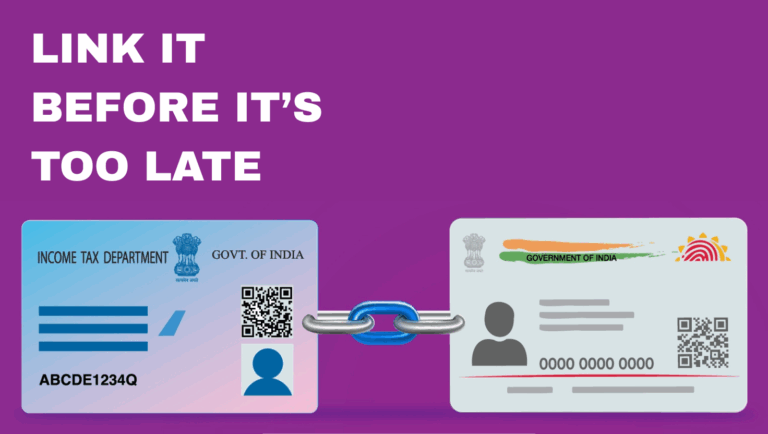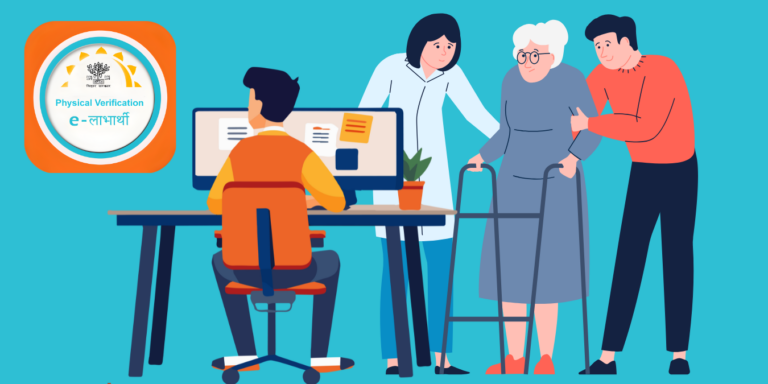
The shocking truth behind India’s corporate health plans! With ₹7,500 crore in claim rejections (IRDAI 2023) and 14% medical inflation, your employer’s insurance may fail you. From job loss coverage gaps to excluded treatments, this eye-opening post reveals why 55% of insured Indians face financial shocks.
In the contemporary Indian workplace, employer-provided corporate health insurance is often hailed as a prized employee benefit. At first glance, it promises respite from the soaring healthcare expenses that burden millions. Yet, beneath this layer of apparent security lies a complex web of limitations and hidden pitfalls that expose employees to significant financial risks. Why then, in 2025, should Indians think twice before depending solely on their corporate health insurance? The answer unfolds amid rising medical inflation, policy ambiguities, and the dynamic nature of employment itself.
The Illusion of Comprehensive Coverage
At first glance, corporate health insurance feels like a lifeline. It’s marketed as a comprehensive solution, with employers footing premiums and promising coverage for you and sometimes your family. But here’s the twist: what seems like a safety net often unravels during a crisis. According to the Insurance Regulatory and Development Authority of India (IRDAI) Annual Report 2023, health insurers rejected claims worth over ₹7,500 crore—not due to fraudulent claims but because of policy limitations like waiting periods, exclusions, sub-limits, and lack of transparency. Shockingly, a 2024 survey revealed that 55% of insured Indians are unaware of their policy’s exclusions, discovering gaps only when claims are denied during emergencies.
Consider this: a robotic surgery for a critical condition, deemed life-saving by doctors, is often excluded from corporate plans due to its “experimental” classification. The result? Families face astronomical bills, dipping into savings or borrowing at high interest rates. Corporate group health plans, while cost-effective for employers (with premiums ranging from ₹10,000 to ₹30,000 per employee annually), typically cap coverage at ₹5-10 lakh. In 2025, with advanced treatments and ICU stays costing upwards of ₹15 lakh, these limits are woefully inadequate, leaving employees to bridge the gap.
The Rising Tsunami of Healthcare Costs in India
Medical inflation in India has hit staggering new highs—14% in 2024, the highest across Asia, with projections for 2025 hovering around 13.2%. Healthcare expenses per capita have steadily increased from Rs. 3,375 in 2010 to Rs. 4,800 in 2020. The COVID-19 pandemic accelerated this surge, leaving both insured and uninsured feeling the pinch. Even insured Indians are frequently forced to skip essential treatment or delay surgeries due to the financial burden that standard insurance plans fail to bear in full.
These cost dynamics make it painfully clear that employer-provided health insurance, while valuable, is no longer a guaranteed shield against the escalating financial risks posed by modern healthcare.
For instance, a single hospitalization for a critical illness like cancer or cardiac surgery can easily exceed ₹10 lakh in metro cities like Mumbai or Delhi. Corporate plans, with their capped sum insured, often fail to cover such expenses fully, forcing employees to pay out-of-pocket (OOP). A 2024 National Health Accounts report estimates that 60-65% of healthcare expenses in India are still OOP, even for insured families, underscoring the protection gap in corporate insurance.
Employment Dynamics: The Fragility of Corporate Insurance
Here’s a suspenseful twist: your corporate health insurance is only as secure as your job. In India, where employees switch jobs every 4-5 years on average (LinkedIn Workforce Report 2024), coverage lapses the moment you leave your employer. Transitioning to a new job may mean higher premiums for individual policies, especially if pre-existing conditions are flagged. Retirees face an even bleaker reality—corporate plans vanish post-employment, leaving them to navigate costly individual policies at an age when health risks peak.
Employers hold the reins on plan details—hospital networks, coverage limits, and renewal clauses—often leaving employees with little say. For those with chronic conditions like diabetes or hypertension, this lack of customization can be a deal breaker. Imagine being forced to switch hospitals mid-treatment because your new employer’s plan doesn’t cover your preferred network. The instability of corporate insurance tied to employment exposes families to significant financial risks during transitions.
Indian Stock Market Trends: Dalal Street’s 2025 Pulse on December 16 – Will Sensex Break 86,000 Today?
Can a Hindu Undivided Family (HUF) Obtain an FSSAI License? Addressing FOSCOS Portal Issues with HUF PAN Number
HDFC Bank Car Loan: Your Key to Affordable Vehicle Financing
How Much Can You Really Earn from a Recurring Deposit? Is It a Secure Investment Option?
How Does Group Insurance Cover Compare to Individual Policies for Chronic Care
In 2025, group (corporate) health insurance and individual policies differ significantly in their coverage of chronic care in India, impacting financial protection for long-term illnesses.
Group Health Insurance (Corporate Plans)
- Group plans typically offer standardised and uniform coverage designed for all employees, with limited or no customization based on individual health needs or chronic conditions.
- Coverage for chronic diseases may be limited by waiting periods, sub-limits, and exclusions that can restrict claims on long-term treatment or medication costs.
- Group insurance usually has lower sum insured limits (often Rs 5-10 lakh) which may be insufficient for extended chronic care that includes frequent hospitalizations, ongoing medication, and lifestyle management.
- The primary advantage is lower or fully-paid premiums by the employer, making it affordable, but coverage is only available during employment tenure and lapses once employment ends.
- Group plans seldom provide dedicated critical illness or chronic illness riders specifically tailored for individual chronic care needs.
Individual Health Insurance Policies
- Individual plans offer greater flexibility and customization, enabling policyholders to choose add-ons and higher sum insured options (often Rs 5-15 lakh or more) better suited for chronic disease management.
- Coverage typically includes specific benefits for chronic ailments with defined waiting periods shortened by recent IRDAI guidelines (now about 3 years), making claims on pre-existing chronic diseases easier.
- Individual policies often allow inclusion of critical illness plans or riders that provide lump-sum payouts for life-threatening chronic diseases like cancer, heart disease, and kidney failure, easing financial stress.
- Policyholders have full control over plan features and renewability regardless of employment status, providing continuous coverage for chronic conditions.
- Premiums tend to be higher compared to group insurance but more comprehensive in covering long-term care, treatments, outpatient medications, and preventive health screening.
Summary for Chronic Care Coverage
| Feature | Group Insurance | Individual Insurance |
| Customization for chronic care | Limited | Extensive |
| Waiting periods for chronic disease | Standard (often longer) | Reduced per IRDAI, 3 years typical |
| Sum insured available | Rs 5-10 lakh usually | Rs 5-15 lakh+ |
| Coverage continuity (post-employment) | Ends with employment | Continuous coverage |
| Critical illness/chronic disease riders | Rare or limited | Available and comprehensive |
| Premium costs | Lower or employer-paid | Higher, paid by policyholder |
Common Exclusions Triggering Claim Rejections
Why do claims worth ₹7,500 crore get rejected? The culprits are often hidden in the fine print of corporate plans. Here are the most common exclusions in 2025:
- Non-Disclosure of Pre-Existing Conditions: Failing to declare conditions like hypertension or asthma leads to denials, with waiting periods of 2-4 years for coverage.
- Waiting Period Violations: Claims for treatments like maternity (9 months-2 years waiting), hernia, or cataract surgeries are rejected if filed too early.
- Excluded Treatments: Cosmetic surgeries, some mental health treatments, and AYUSH therapies (Ayurveda, Yoga, etc.) face exclusions or sub-limits.
- Non-Network Hospitals: Cashless claims are denied if treatment occurs outside the insurer’s hospital network without pre-authorization.
- Incomplete Documentation: Missing bills or reports lead to automatic rejections.
- Exceeding Sum Insured: Costs beyond the policy’s limit leave patients footing the bill.
- Policy Lapse: Non-payment of premiums renders claims invalid.
These exclusions underscore the need for vigilance. Ignorance of policy terms can turn a medical emergency into a financial nightmare.
Limited Benefits for Dependents and Families
Corporate plans often tout family coverage, but the reality is less rosy. Many exclude dependents entirely or impose strict sub-limits, forcing employees to buy separate policies for spouses or children. For example, a 2024 study found that 40% of corporate plans cap dependent coverage at ₹2-3 lakh, insufficient for serious illnesses. This fragmentation leaves families underinsured, with OOP expenses piling up during crises. A holistic health plan should cover the entire family, but corporate insurance rarely delivers.
Coverage Gap if Change Jobs or Lose Employment
Losing or switching jobs creates a dangerous coverage gap. Corporate insurance typically ends immediately or within a 30-day grace period, leaving you uninsured until a new policy kicks in. During this gap, any medical expenses—especially for chronic conditions—are your responsibility. New individual policies may impose higher premiums or waiting periods for pre-existing conditions, amplifying risks. IRDAI’s portability rules allow transferring benefits like no-claim bonuses, but only with timely action. Without proactive planning, job transitions can spell financial disaster.
Budgeting Beyond Corporate Coverage
To bridge the gaps in corporate insurance, budgeting extra for healthcare is critical. In 2025, Indian families face OOP expenses of ₹15,000-30,000 per person annually, totaling ₹60,000-1,20,000 for a family of four (NITI Aayog Health Report 2024). This covers uncovered treatments, outpatient care, and medications. Experts recommend budgeting 20-30% of your corporate premium as a buffer or investing in a top-up plan with a sum insured of ₹10-50 lakh. These plans cover critical illnesses, outpatient costs, and preventive care, offering robust protection.
The Human Story: When Insurance Falls Short
Picture this: A middle-class family from Bengaluru is caught in a medical emergency requiring surgery with robotic assistance. The hospital declares the treatment the best option, but their corporate insurance denies coverage, citing exclusions. The family scrambles to arrange funds, dipping into savings and borrowing at interest, while the father’s health hangs in the balance. This is no isolated incident—it’s the harsh reality for thousands of Indian households in 2025, underscoring why reliance on employer insurance is a dangerous gamble.
Actionable Steps for Indian Employees
Don’t let corporate insurance lull you into complacency. Here’s how to safeguard your health and finances in 2025:
- Supplement with Individual Insurance: Choose a family floater or top-up plan with high sum insured and critical illness riders.
- Prioritize Chronic and Outpatient Care: Opt for plans covering medications, screenings, and lifestyle diseases.
- Read the Fine Print: Understand exclusions, sub-limits, and waiting periods to avoid surprises.
- Plan for Transitions: Secure individual coverage before leaving a job or retiring to avoid gaps.
- Invest in Wellness: Regular check-ups and healthy habits reduce claims and boost long-term health.
The Emotional and Financial Toll of Claim Rejections
The ₹7,500 crore in claim rejections isn’t just a statistic—it’s a wake-up call. Denied claims force families to drain savings, borrow at high interest, or delay critical treatments, leading to emotional and financial distress. With medical inflation outpacing income growth, even a single rejection can destabilize a household. Corporate insurance’s limitations—low coverage caps, exclusions, and employment dependency—make it an unreliable sole shield.
Final Thought: Build Your Own Safety Net
Corporate health insurance remains a valuable employee benefit but leaning solely on it is akin to standing on a crumbling bridge—comfortable until the cracks widen. In India’s rapidly evolving healthcare landscape of 2025, where medical inflation is relentless and policy limitations are widespread, prudent individuals must build their own fortified safety nets. Supplementing employer coverage with carefully chosen individual insurance, staying well-informed, and embracing holistic health strategies are not just recommendations—they are imperatives for safeguarding health and financial peace of mind.
Guard against the unexpected, understand your insurance thoroughly, and take control of your health finances today—because when it comes to wellbeing, partial protection is no protection at all.

































